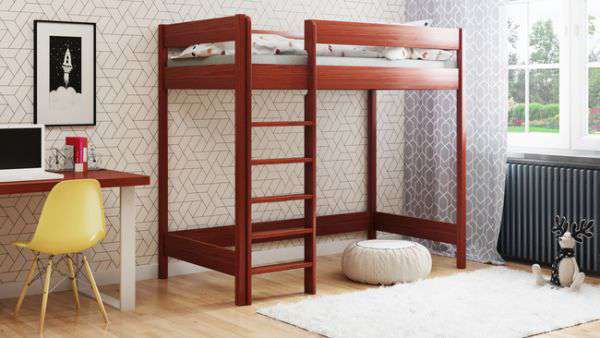Expert Bunk Bed Crafter
Full Size Pallet Bed Drafts - Learn How To Properly Plan And Set up Your Dream Durable Design Step by Step

Next, anchor bundle to the truck bed with two ratchet straps. And poly film also lubricates saw blade with each stroke, so you won't get any burn marks. If you don't have long clamps, just glue and clamp joints together with a few extra brads. Use a special drywall screw gun, or buy a special bit for your cordless drill that sets the screws just under the surface without driving them too deep. Run shelf flat against your worktable and slowly sand up (https://woodcraftdiagrams.com) to the pencil line. Don't use a socket if chrome is peeling. This simple base allows you to clamp or screw the table saw to sawhorses, which provide a wide foundation for added stability.
There is truly a place for everything, everything goes in its place, and no usable area remains empty. Choose a level and easily accessible site. Cordless tools are greatest advance in human history. Run your drill at almost top speed for drilling in timber and slow speed for metal. Then remove doors, finish-sand the whole chest and add top, which is just two layers of plywood edge-banded and glued together. Locate the studs and mark centers on tape. Screw scraps of lumber to 2x4s on both sides of the door to hold the boards together while you add horizontal rail.
However, applying multiple coats of stain isn't always the best way to achieve a deeper color. Scrape off the excess using a straight board and a sawing motion. To ensure consistently shaped panels, build planter sides on an assembly platform. (click for source) Smooth arches with an orbital sander. This is the perfect first-time furniture project-simple, useful and satisfying. The louvered door is made from one of a pair of closet bifold doors, which you can buy at almost any home center. Align the panels flush with the front and with equal overhangs at the ends. In this drawer, movable partitions are held in place by strips of foam weather stripping at front and back.
Cut corresponding slots in ends of long stretchers. If you want to check out some more quick projects, click here. Use a spacer to position slot so the long rail would be centered on the leg when it's installed. Next, check out our 56 favorite woodworking tips. And although his invention has been improved over the last century, basic idea is still brilliant. Then, pull the slides apart and attach other section to the sides of the drawers. Leave depth setting on blade and use the miter gauge to craft rabbets on end panels. One of best and safest ways to begin routing is to use router bits fitted with ball-bearing pilots.
You could cut the drywall the usual way by scoring one side with a utility knife, bending it to break at scored line, and then cutting paper backing. Then, rout decorative bead around inside edge of the frame. Mount the trellis on the back wall before moving it to pond site. Use a 180 grit sandpaper on any type of sander to soften the edges and get rid of any splinters or rough edges. If your fireplace is open with brick or stone creating a lip, you may want to measure the insert to sit just behind this lip. Cut grips on the bottom edge of each handle with a circular saw.
Also, trim the small cutout piece of each arm to make arm support for each side. This cabinet is perfect solution for small painting supplies, glue and more. Attaching the drawer front so it's perfectly aligned is a little tricky. Slide the bar between the blocks, align the first mark with the center and pull bar toward you. Clamp shelf nosing to a perfectly flat surface like table saw top shown here. You could also change the size of planter box. Use a block plane or sander to remove material from the back edge for a tight fit. Assemble the front and back of the planters against a square.
Cut 1x4 cradle sides to the same length as the drawer sides. That way, you could remove it for easier sanding and finishing. Hang and align the doors so you can add the rails and stiles. Using plywood or particleboard, make a skid for legs, elevating them on one end with a wood strip to control amount of taper. This collection of options for bike storage will help. When the job's done, just throw away the insulation. Once finish is dry, add two magnetic catches to hatch stop. Apply two beads of construction adhesive, clamp legs into place and secure them with screws.
Place the top onto bottom, oriented how they'll be when assembled. Drill pilot and countersink holes and apply a dab of construction adhesive at each joint. Build the walls and trellis on a big, flat work surface like your driveway.
